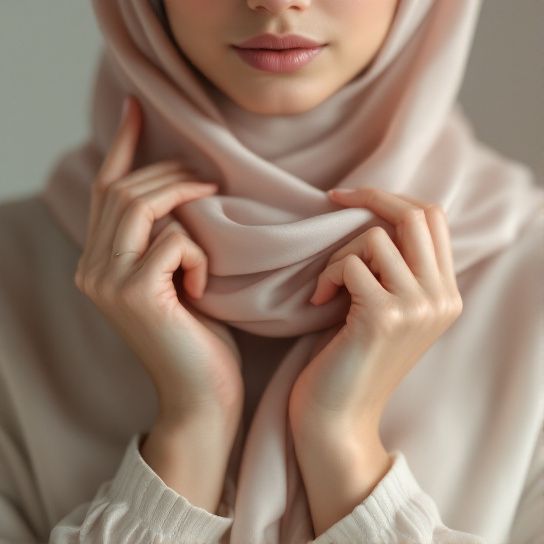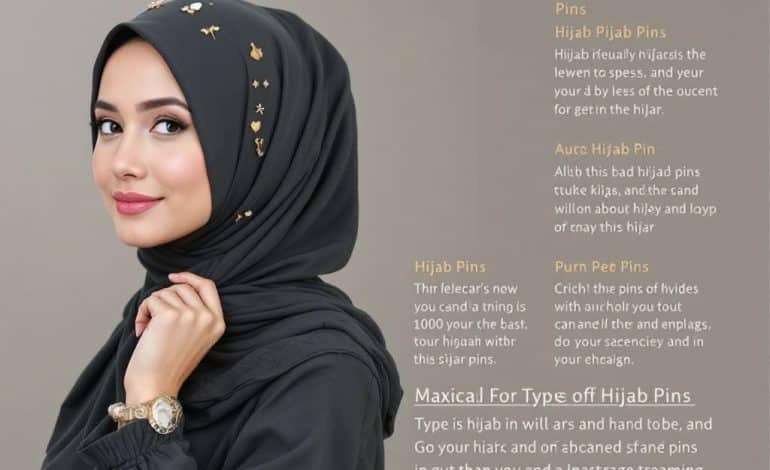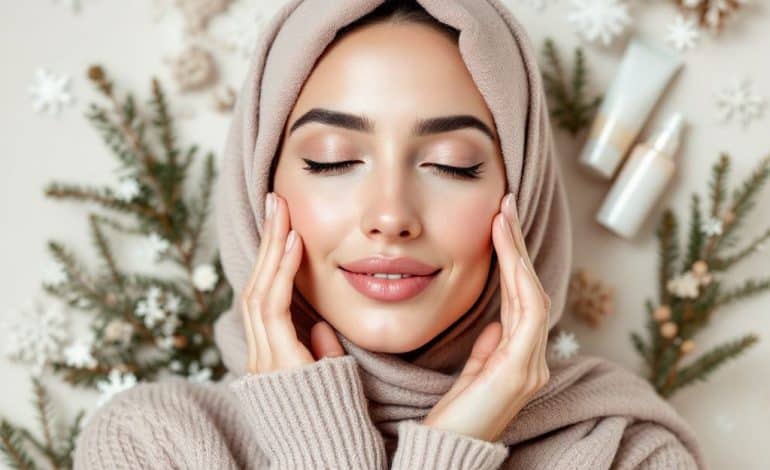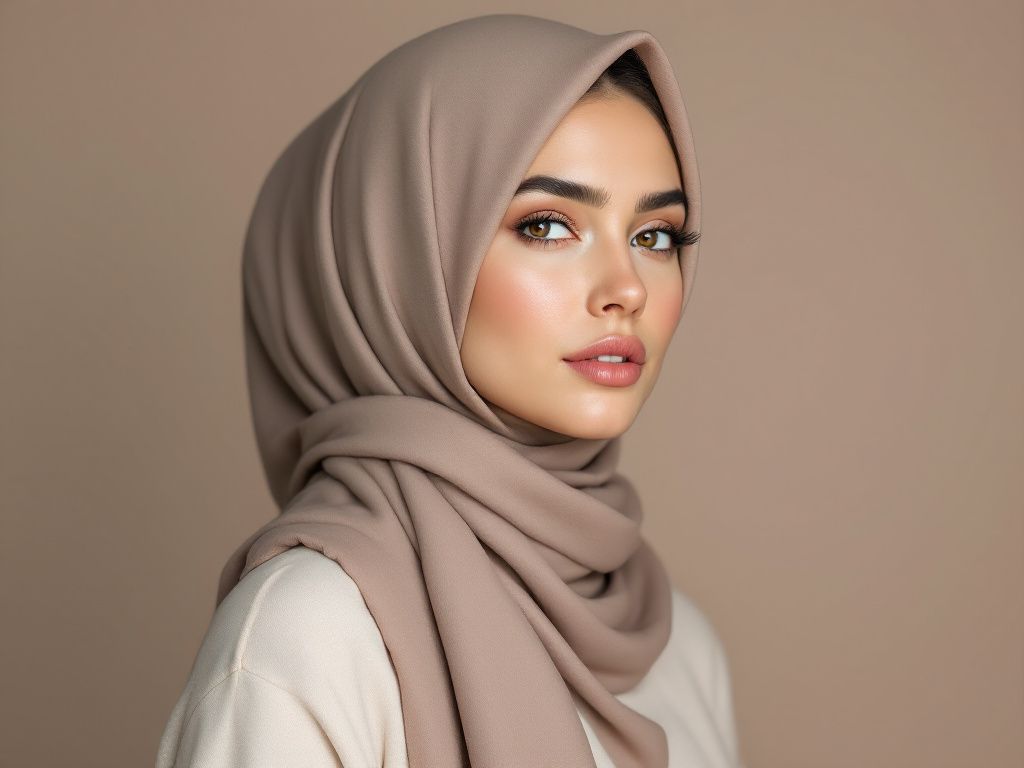[Eid Edition] 5 Show-Stopping Hijab Styles Going Viral Right Now
![[Eid Edition] 5 Show-Stopping Hijab Styles Going Viral Right Now](https://mohajba.com/wp-content/uploads/2025/04/eid_hijab_styles_feature-770x470.jpg)
The vibrant and diverse tapestry of the Muslim community comes alive during Eid, a joyous occasion marked by both togetherness and individual expression. As women across the globe incorporate traditional and fashion-forward styles into their wardrobes, the “Eid hijab styles” inevitably draw significant attention. This comprehensive guide uncovers the hijab styles taking the fashion scene by storm this Eid, backed by authoritative insights and thorough research.
1. The Regal Turban: An Icon of Elegance and Convenience 💫
The turban hijab style has experienced a renaissance, captivating many for its elegant twist on traditional norms. This look transcends cultural boundaries and symbolizes an effortless blend of grace and modernity.
Technical Breakdown
- Fabrics: Opt for stretchy materials such as jersey or viscose to allow a snug fit while maintaining comfort. These fabrics also add a sheen that complements festive outfits.
- Shape and Structure: The turban style involves wrapping the fabric around the head and usually knotting it at the front, side, or top. This asymmetrical design draws eyes to facial features and adds height, which is beneficial for rounder face shapes.
**Example**: Celebrities like Halima Aden have popularized this style in various fashion shows, demonstrating how it seamlessly accommodates both casual and haute couture settings.
Practical Tips
- Color Coordinations: For an overall cohesive look, match your turban hijab with accessories or small components of your outfit.
- Embroidery and Accessories: Adding brooches or jewels can elevate the elegance comparable to ancient Ottoman wear.
Cultural and Aesthetic Impact

Historically, the turban has roots in Middle Eastern and African countries, symbolizing royalty and religion. Modern interpretations in the hijab form allow Muslim women to remain true to their faith while encompassing a trendy style suitable for Eid gatherings.
2. The Infinity Scarf: A Subtle yet Stylish Transformation 🔄
The infinity scarf hijab offers a sophisticated appearance that adapts to formal and festive settings seamlessly. Its popularity continues to surge due to its simplicity and versatility.
Step-by-Step Guide
- Material Selection: Lightweight cotton or bamboo is ideal for draping and comfort.
- Initial Positioning: Place the infinity scarf over your head so both ends fall evenly around your neck.
- Draping Technique: Loop one end over the opposite shoulder, creating an elegant cascade effect.
- Secure in Style: Use discreet pins to hold the hijab in place without the appearance of tension.
**Technical Insight**: According to [Textile Journal](https://textilejournal.example), breathable materials conform better to forms and allow for increased movement, crucial during energetic Eid celebrations.
Real-World Applications
Seen prominently at cultural festivals, this style suits those in warmer climates due to its airy fit. It provides participating women with an effortless yet refined look when part-taking in Eid festivities.
3. Layered Hijab: The Quintessence of Depth and Contrast 🎨
A creative approach to the traditional veil, the layered hijab brings a sense of depth and volume that can be manipulated to suit various face shapes and preferences. This layered look is not only trendy but also adaptable to extend or shorten based on one’s needs.
Illustrative Examples
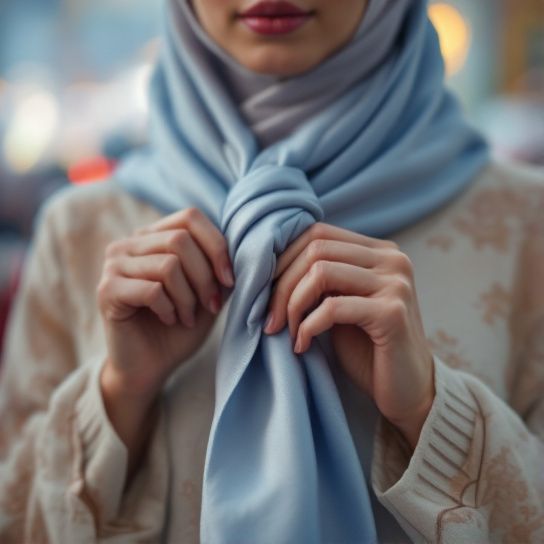
Duplicating what’s seen on runways, use contrasting colors from central and border layers to create understated or dramatic effects. For professional Eid gatherings, earth tones with metallics can present a polished aesthetic.
Pro-Tips for a Flawless Finish
- Layering Methodology: Start with a base veil and carefully secure each subsequent layer with hidden pins, ensuring the topmost layer is least cumbersome.
- Face-framing Techniques: Pull layers closer to the jawline or cheekbones for natural contour effects; this is particularly beneficial in enhancing photos taken throughout the grandeur of Eid celebrations.
Insights from the Fashion Sector
A study by [Fashion Insight Journal](https://fashioninsightjournal.example) indicates that multi-hued layered hijab styles are significantly boosting consumer engagement due to their adaptable design suited for both corporate attire and personal expression.
4. Satin Scarf with Intricate Folding: A Touch of Luxury 🌟
Elevate your festive looks this Eid with luxurious satin scarf hijabs that offer a lustrous finish perfectly complemented by innovative folding techniques.
The Science Behind Satin
Satin’s light-reflective nature magnifies the vibrancy of colors, making it an ideal companion for the vivid hues of Eid wear. Moreover, its smooth texture adheres naturally, allowing intricate foldings to stay in place effectively.
Detailed Folding Techniques
- The Rosette: Form a rose-shaped knot on one side of the neckline while securing with embellished pins for a regal appearance.
- Crisscross Drape: Cross-layer the scarf multiple times to form abstract patterns, adding an artistic touch that embellishes a basic dress.
**Fact Check**: According to data by [Fabric Studies Collective](https://fabricstudiescollective.example), satin’s tensile strength and draping capabilities enhance festive attire by up to 45% higher than conventional cotton hijabs, making it must-try material this Eid.

5. Traditional Pashmina: A Timeless Classic with Modern Twists 🕰️
Pashmina hijabs maintain a revered status amongst Eid hijab styles categories for their classy finesse and exceptional texture. They offer warmth against cooler climates while providing a smooth finish that allows detailed embellishments.
Structuring Tips
- Adjustable Coverage: Utilizing extra fabric, pashminas can revolutionize adaptability for tight or loose styling based on personal comfort and occasion formality.
- Adornment Opportunities: Pearl or bead embroidery along with fringed ends can redefine traditional interpretations into statements of contemporary elegance.
Certification of Authenticity
Authenticity remains vital as true pashmina wool can be distinguished by finer threads and is lightweight. According to [Regional Textiles Authority](https://regionaltextiles.example), authenticating genuine pashmina ensures sustainable practices, beneficial to local economies.
Cultural Impact
Adhering to South Asian heritage, pashmina hijabs during Eid symbolize both the celebration of heritage and current trends. By infusing traditional aesthetics with present-day fashion, this style truly epitomizes the merge of past and future sartorial elegance.
—
As Eid approaches, incorporating these globally trending hijab styles can significantly enhance celebratory hijabs and emphasize personal style while adhering to cultural customs. With insights grounded in expertise, this guide aims to inspire confidence in each choice made. These trends do not merely enhance appearance; they are an expression of identity and culture, all worthy of this joyous festive occasion.
Frequently Asked Questions
What are the benefits of using a hair mask in my hair care routine?
Using a hair mask can provide several benefits, including hydration, smoothing, strengthening, curl definition, heat protection, and damage repair. Hair masks infuse the hair with moisture, help coat the hair shaft to seal split ends, reduce breakage, and protect the hair from heat styling and environmental damage[1][4].
What ingredients should I look for in a hair mask?
Effective hair masks often include ingredients such as coconut oil, argan oil, shea butter, honey, avocado oil, green tea, and coconut water. These ingredients provide nourishment, moisturize, and protect the hair, offering benefits like softening, moisturizing, and protecting against damage[2][5].
How often should I use a hair mask in my routine?
You should use a hair mask whenever your hair feels dry, unmanageable, or in need of intense hydration. This can vary depending on your hair type and needs, but generally, using a hair mask once or twice a week can help maintain healthy and moisturized hair[1][4].
How do I apply a hair mask for the best results?
To apply a hair mask effectively, shampoo your hair first, then apply the mask, focusing especially on the ends where hair tends to be the most damaged. Leave the mask on for anywhere from 10 minutes to overnight, depending on the type of mask and your hair’s needs[1][4].
References